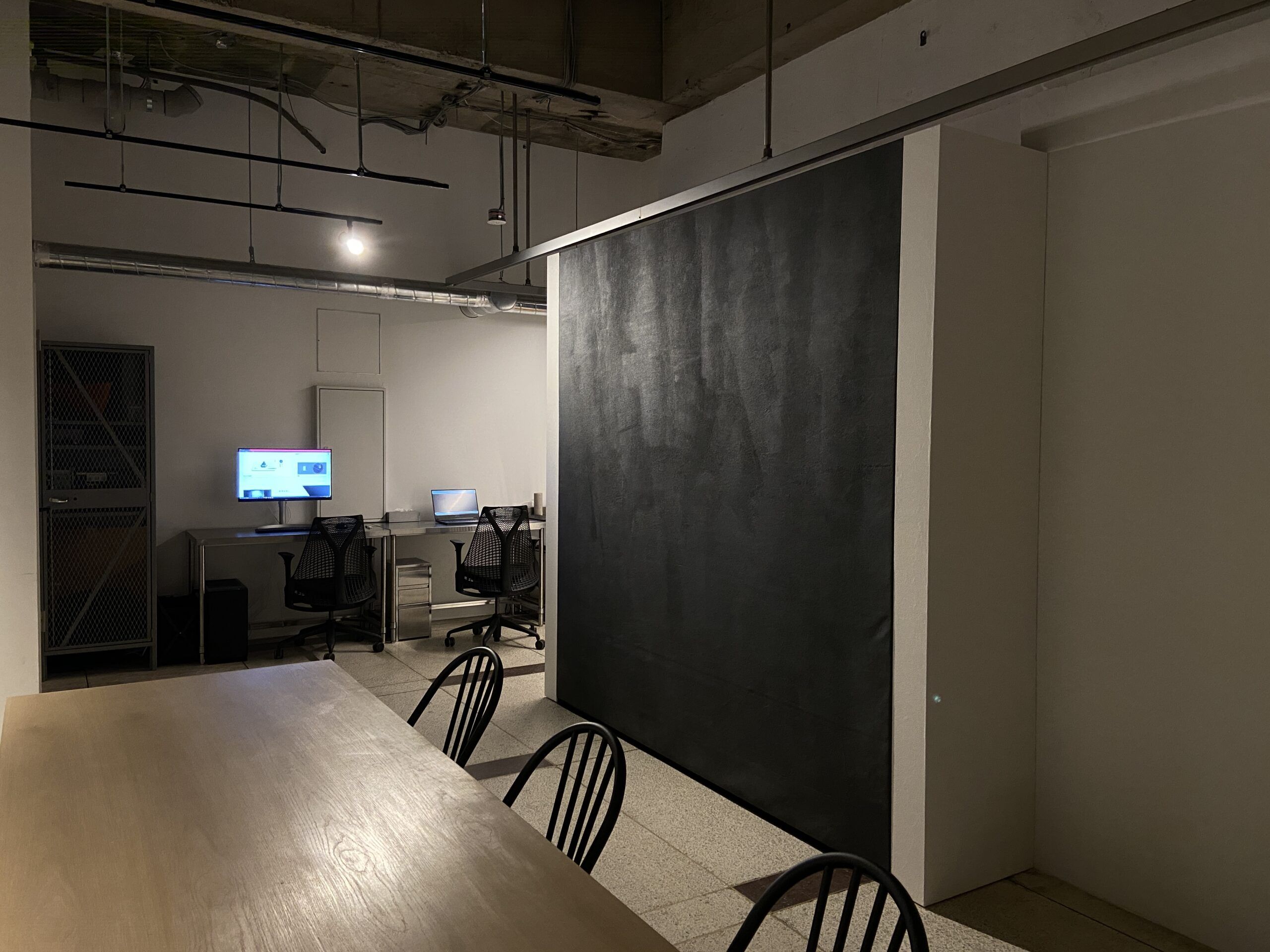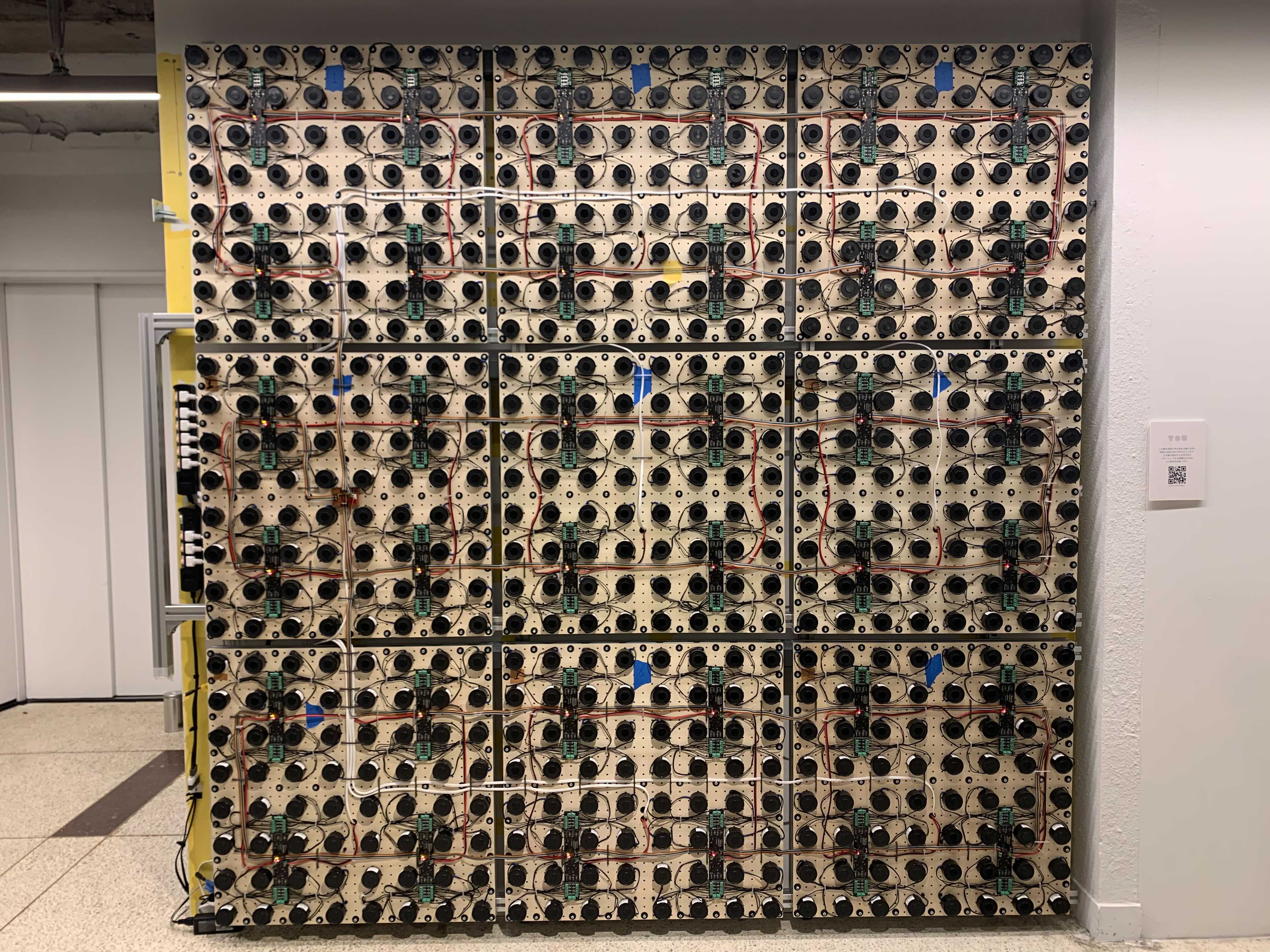
TOU – Breathing Wall
TOU is a wall that recreates the natural movements of the wind by sending wind data to a grid of 576 electromagnets which move a sheet of flexible, magnetic material developed specifically for this project.
TOU was built to demonstrate an alternate path for technology in which the typical focus on efficiency is replaced with the goal of releasing our minds from the constant noise of modern life to allow our thoughts to wander freely.
To do this, we need to release our minds from goal oriented thinking, which can be done by observing unpredictable phenomena in which our minds are freed of thinking because there is no pattern or logic for our minds to try and understand. We used the unpredictability of wind as our data source with the imagery of tall grass fields swaying in the wind as an influence on our visual goals for the project. This led to us creating a wall as the medium for the wind to express its movements on.
The current setup for TOU is 242cm x 242cm x 7cm and weighs approximately 200kg. It consists of 9 modular panels, each consisting of 64 electromagnets, a 350w 24v power supply, and four 16 channel PCBs to control the electromagnets. An NUC (small Windows computer) and an Arduino interpret the wind data and send it to all connected electromagnets.
The modular design and parts selection was based on building an installation that could be easily assembled and disassembled. Most parts on TOU can be bought at local stores or bought online with overnight shipping so if anything breaks the downtime should be as short as possible. The are also many 3D printed clips for cable management and mounting parts that allows parts to removed and installed by hand without any special tools.
TOU has been on display and running for months without issue.***
***The only time TOU completely stopped unexpectedly was because Windows did an automatic update which required user intervention.

TOU v1 installed in a Tokyo office
We were provided with many material samples when starting this project, but none of them quite looked or reacted how we wanted them to. So we decided to develop our own material.
I wanted something flexible and easy to work with and something that would react to the magnets.
The result was mixing iron powder and latex together to create flexible sheets that would react to the electromagnets.
At first the latex/iron mixture was painted on to different fabrics but we eventually came to the conclusion that the latex/iron mixture was the best solution on its own without any additional support structure.
The latex iron mixture is painted on to wax paper and left to dry layer after layer. Once dry, the sheet is peeled from the wax paper and attached to an aluminum frame which mounts in front of the wall of electromagnets.

